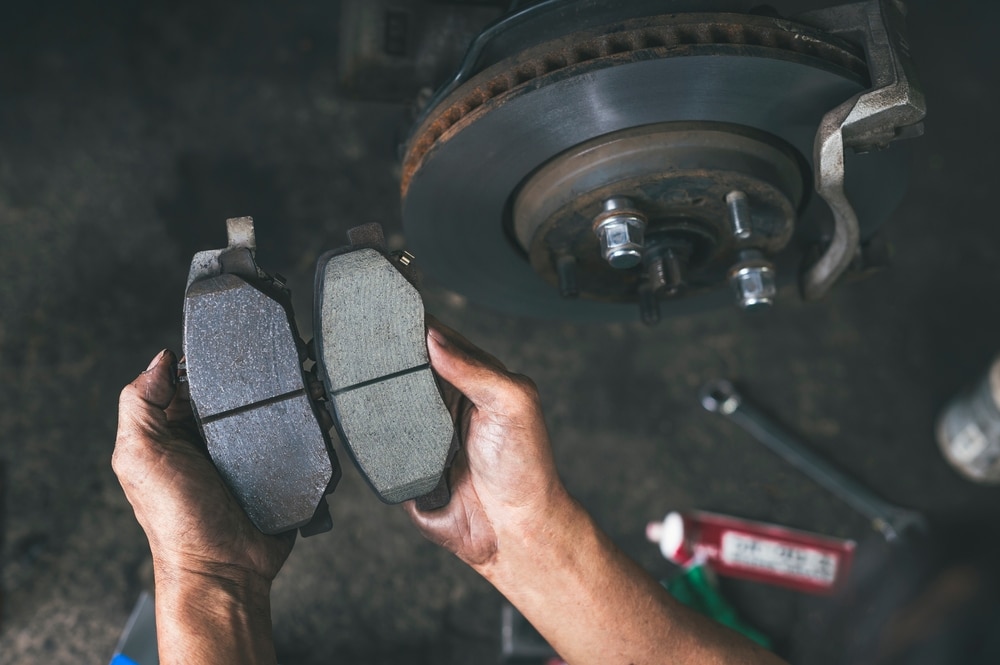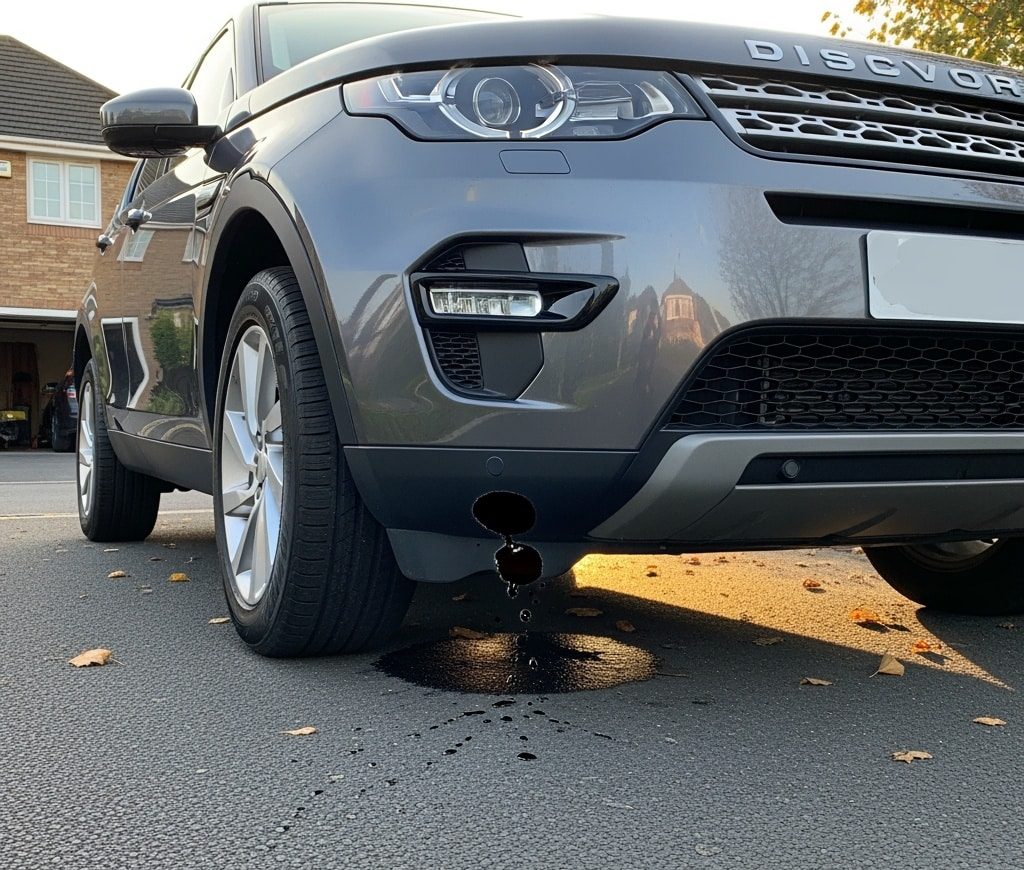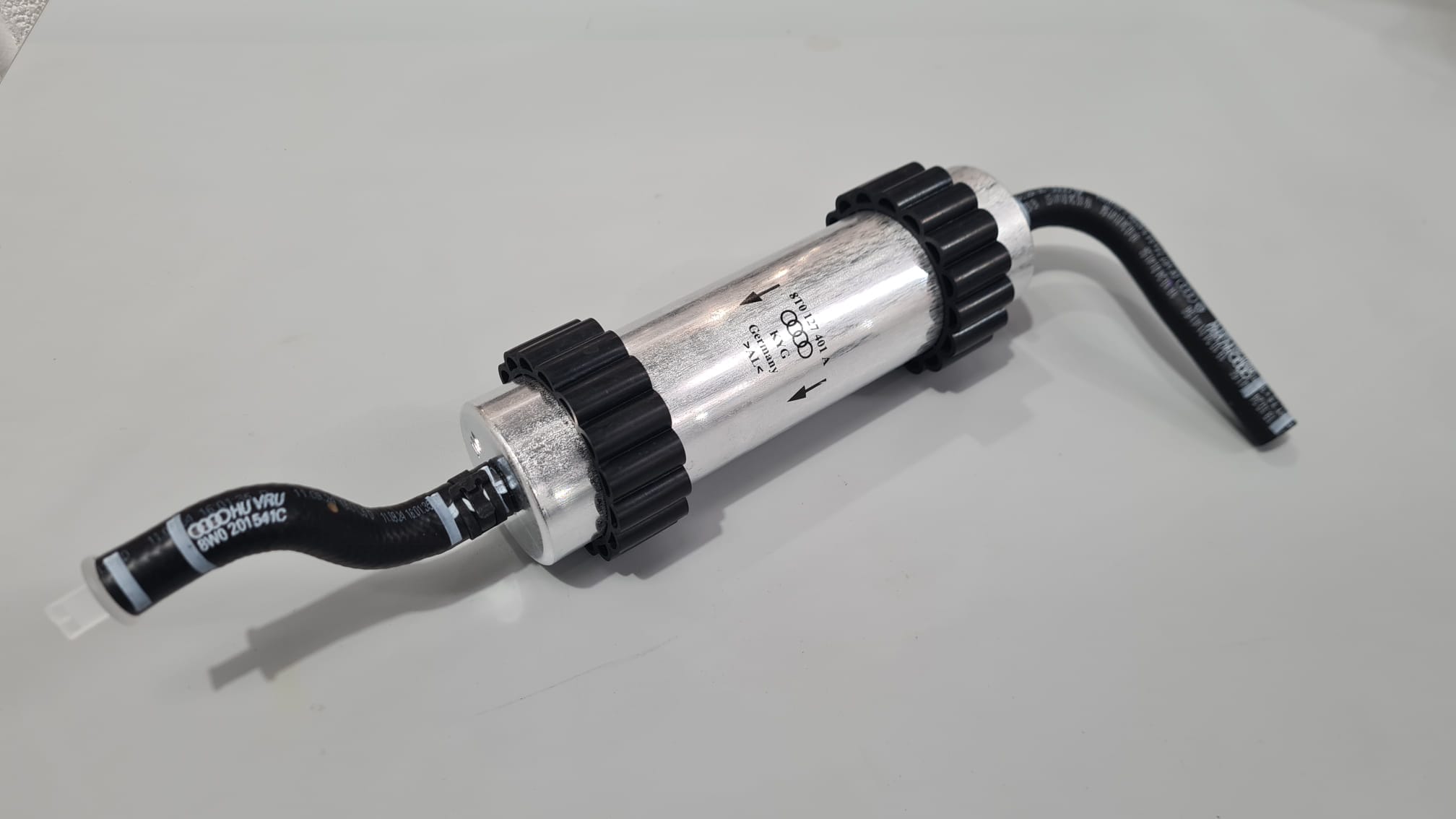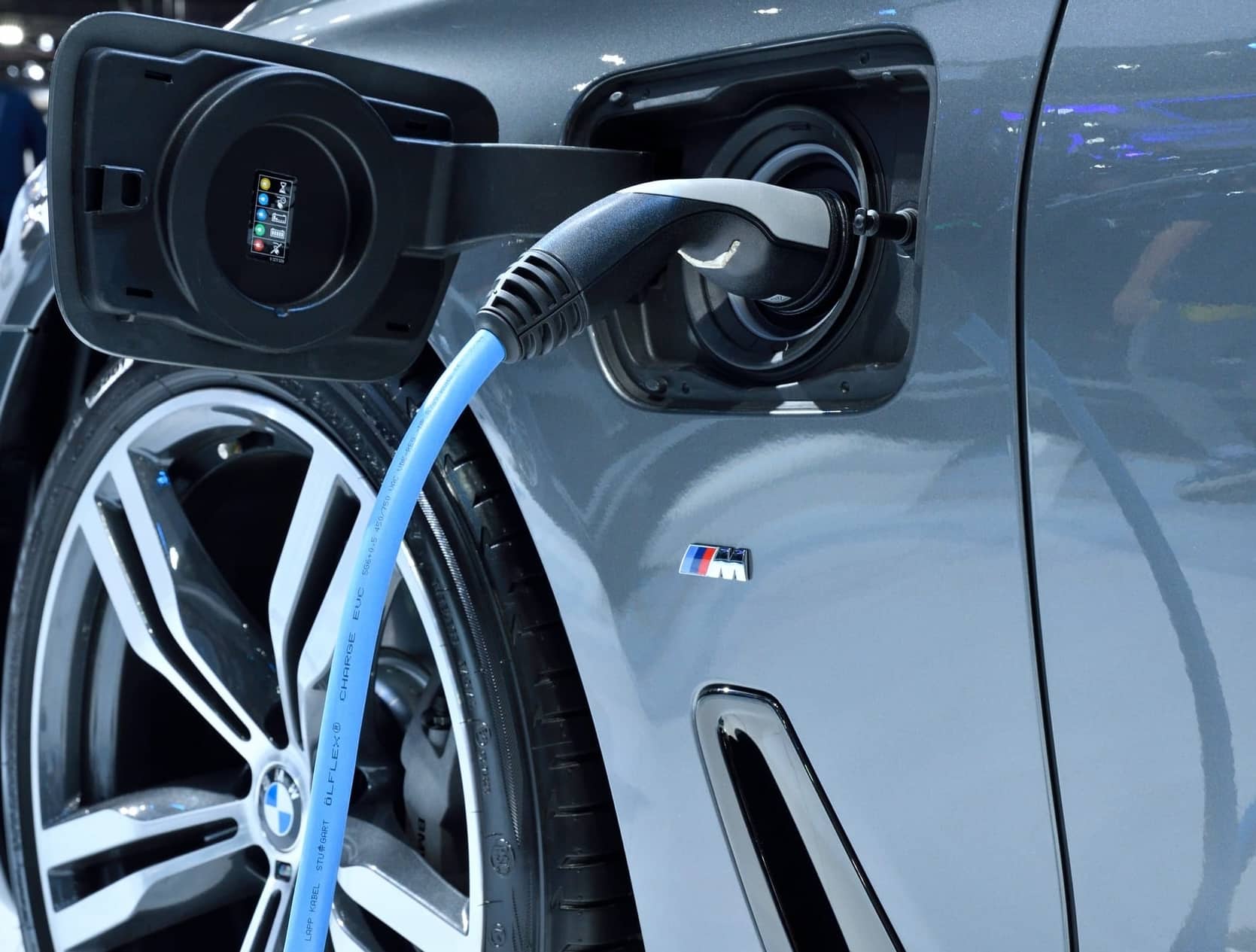Brake Pads
Brake pads are one of your vehicle’s most used, most worn, and most safety-critical components, yet most drivers barely give them a second thought. Until there’s a noise. Or a warning light. Or worse, a sudden drop in braking performance.
This blog is here to change that.
At Ystrad Service Centre, we’ve inspected and replaced thousands of brake pads. We’ve seen the full picture—from routine wear to neglected pads that have caused serious damage. Using that hands-on experience, we’ve put together a practical guide to help you understand how brake pads work, why they matter, and what to look out for before small problems become bigger ones.
If you’re driving in or around Cardiff and want trusted advice, this is for you.
Let’s start with the basics—what do brake pads do?
What Do Brake Pads Do?
Let’s get straight to it: brake pads are your car’s front-line of defence when it comes to stopping safely. Tucked inside the brake calliper, they’re the components that press against the brake discs every time you hit the pedal. (Worth noting: some cars use brake shoes and drums instead of pads and discs.)
These small blocks of engineered friction material do a massive job. When you press the brake pedal, hydraulic pressure forces the pads onto the rotating brake disc, generating the friction needed to slow the vehicle. That friction also produces heat—lots of it. Quality brake pads are built to absorb and manage that heat safely, but wear is inevitable.
Every time you brake, a tiny bit of the pad wears away. That’s not a fault, it’s exactly how the system is designed. But over time, that wear adds up. Excessively worn pads can’t deliver the same stopping power, and if ignored, they start damaging other parts of the system, like the discs themselves. That’s when a brake pad replacement can become a bigger job, and the cost begins to climb.
At Ystrad Service Centre in Ystrad Mynach, we check your brake pads during every service, measuring wear and letting you know if it’s time for action. Because when it comes to safety, guesswork simply isn’t an option.
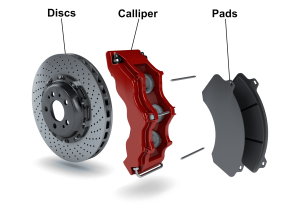
Types of Brake Pads
Brake pads may all serve the same purpose, but they’re not all made the same, and for good reason. Different vehicles, driving demands, and braking systems require different materials and performance characteristics. That’s why the type of brake pad fitted to your vehicle is not simply a matter of preference.
At Ystrad Service Centre in Ystrad Mynach, we only fit genuine manufacturer or OEM-approved parts, because your braking system was designed and tested to work with a specific pad type. Anything else is a compromise. And when it comes to safety, compromise isn’t on the menu.
That said, it’s worth knowing what’s out there, because not all pads are made the same. Most brake pads fall into one of three categories:
- Organic (NAO) pads: Made with fibres like cellulose, aramid, and mineral compounds, these are typically quieter but wear faster. They’re suited to everyday driving but can’t handle extreme heat as well as some of the other options.
- Semi-metallic pads: These include high levels of steel or copper fibres. They offer higher performance and heat resistance, but can be noisier, wear discs faster, and generate more brake dust.
- Ceramic pads: Built with copper fibres and ceramic particles, these pads manage heat exceptionally well and produce minimal dust. They’re common in high-performance braking systems but come at a higher price.
It might sound like one type is better, but that’s not how brake systems work. The friction material, disc design, and calliper setup are all engineered to work as a unit. Swap out the wrong bit, and the whole system suffers; whether that’s uneven wear, poor heat transfer, or worse, stopping distances.
That’s why we never leave it to chance. Every brake pad replacement we carry out at Ystrad Service Centre in Ystrad Mynach is based on the manufacturer’s specifications. Because when the job is to stop two tonnes of metal moving at speed, getting it wrong isn’t an option.
What Can Affect Brake Pad Wear?
At Ystrad Service Centre in Ystrad Mynach, we see a wide range of wear rates depending on how the vehicle is driven, maintained, and what condition the rest of the braking system is in. Here’s what really makes a difference:
- Driving conditions
Stop-start traffic, frequent short journeys, towing, and steep terrain all increase how often and how hard the brakes are applied. This creates more heat and friction, which naturally leads to faster pad wear. - Calliper faults
If the calliper and its components aren’t working correctly, the pads might not fully release after braking. This causes continuous light contact with the brake disc, which accelerates wear and can lead to uneven pad thickness. - Disc surface condition
If the discs are heavily scored, corroded, or warped, new pads won’t contact the surface evenly. That reduces braking performance and causes premature wear on the pads themselves. - Incorrect parts
Using the wrong type of pad can throw off the braking balance. It may also affect how the pads wear and how well the vehicle stops. That’s why we only use parts that meet the manufacturer’s specifications. - Corrosion and contamination
Brake pads are exposed to road spray and dirt. Debris and moisture can build up in the calliper, or between the pad and the backing plate, causing corrosion. Over time, this can cause the pad material to separate, which is a serious safety issue.
At Ystrad Service Centre, we don’t just look at the pads in isolation. We inspect the whole braking system to spot issues before they become bigger problems. Getting ahead of uneven or high levels of wear now means avoiding more expensive repairs later.
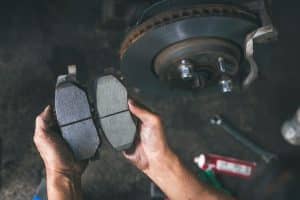
Warning Signs: How to Spot Brake Pad Wear
Brake pads typically don’t just fail without warning. Spotting the warning signs helps to keep you safe on the road and can save you from bigger repair bills later.
Here’s what to listen to and look out for:
- Squealing or screeching when you brake
Some brake pads include a built-in wear indicator—a small metal tab that makes a high-pitched noise when the pad material gets low. If you hear this, don’t ignore it. It’s doing its job by warning you that urgent attention is required. - Grinding noise
A harsh, grinding sound when braking could mean the pad material is totally worn through, and the metal backing plate is making contact with the disc. In this situation, your vehicle’s braking performance will be severely compromised and needs urgent attention. - Brake warning light on your dashboard
If your vehicle has electronic wear sensors, you may see a brake warning light when the pads are nearing the end of their life. This is a direct alert that you should have a brake inspection immediately; don’t treat it like a low washer fluid light.
Brakes are a complex system. That’s why regular servicing and brake inspections are critical for your safety. If you’re unsure, or something doesn’t feel right when you’re braking, get in touch with Ystrad Service Centre in Ystrad Mynach. We’ll thoroughly inspect your vehicle and give you a clear, honest assessment.
Why You Shouldn’t Delay Replacement
It might start with a warning light you plan to “get checked soon”, but when it comes to brake pads, delaying action doesn’t just affect safety, it can drive up repair costs fast.
Here’s the problem: brake pads are designed to wear. But once they start to reach the end of their usable life, that wear accelerates. If they’re left too long, the remaining material disappears, and the metal backing starts making contact with the brake disc.
At that point, you’re potentially no longer just booking a brake pad replacement and could require discs as well. And that’s a jump in cost that you could have avoided.
But it’s not just about money. Worn-out pads compromise stopping performance and put added strain on the rest of the braking system. The longer they’re left, the higher the risk of damaging callipers, overheating brake fluid, or causing uneven wear that affects how your car handles in an emergency.
At Ystrad Service Centre in Ystrad Mynach, we’ve seen many cases where what could have been a brake pad replacement becomes a much larger repair, simply because it wasn’t dealt with early enough. If you’ve heard a noise, seen a warning light, or just haven’t had your brakes checked in a while, get in touch. An inspection now could save you hundreds, and make sure your brakes are ready when you need them most.
Why Choose Ystrad Service Centre in Ystrad Mynach?
Brake pads might be small, but their role in your vehicle’s safety couldn’t be bigger. That’s why routine servicing matters, and why it pays to have the right team looking after your car.
At Ystrad Service Centre, we specialise in high-quality maintenance and brake pad replacement work, using genuine manufacturer or OEM parts. Our precision fitting follows the same technical standards you’d expect from a main dealer, but without the dealership price tag.
Whether you’re based in Ystrad Mynach or the surrounding Caerphilly area, you can count on us to deliver expert care with honest advice. We don’t cut corners. We don’t guess.
Booking in for regular servicing is the easiest way to stay ahead of brake pad wear and avoid those bigger, more expensive problems down the line. If it’s been a while since your brakes were checked, or if something doesn’t feel quite right, contact our team today.
At Ystrad Service Centre in Ystrad Mynach, your safety is always our priority. Call today on 01443 540460 to book your brake inspection or service.
